
A recipient of the University of Texas at Austin’s Graduate Continuing Fellowship, Kino Steet co-founding Director Sachin Dheeraj’s thesis project Men in Blue, a winner of the 2022 DGA Student Film awards, is a scathing indictment of the hidden in plain sight practice of modern slavery taking place in America and across the globe. Based on testimony from a 2007 case, the film depicts the atrocities suffered by Indian workers brought to the USA on the false promise of fair employment rebuilding a destroyed shipyard post hurricane Katrina, who instead they find themselves forced to work and live under inhumane conditions. Rather than explore the events through documentary as was his initial intention, Dheeraj has crafted the testimonies of these exploited workers into a viscerally felt ‘what could have been’ depiction of resistance and revolt birthed from callus exploitation for profit. Informed by his experience with immigrant workers in America and his own personal history as an immigrant, Men in Blue resonates with stark authenticity as Dheeraj uses tightly focused shots to hone in on his characters’ plight while employing frames dominated by darkness to trap his audience in there with them. As Men in Blue continues its tour of the festival circuit, we grabbed some time with Dheeraj to speak about using photographs from the case to recreate the workers’ claustrophobic living conditions, finding a lead actor whose real-life experiences reflect those on screen and using camcorder footage to give a voice and agency to his beleaguered protagonists which were denied to them in actuality.
Men in Blue is unfortunately based on a true story, what about that situation compelled you to create a film about those events?
This film stems from my fieldwork among immigrant workers in the coastal areas of Texas and rural parts of New Jersey. As an immigrant, I empathize with the Indian workers’ hopes and disappointments. I was heartbroken when I first read about what had happened to the workers. I wanted to make a film not about what had happened but about what could have happened if those workers had a tool like a camcorder at their disposal to document what was happening to them by recording their testimonies.
These testimonies shown in the film through a camcorder are actual lines written by the real shipyard workers who were exploited. This is the truth we are bringing to our fiction. It is a fictional re-imagination of their resistance. Any human should be able to live with some basic unit of dignity. And when this dignity is taken away, that is when resistance should happen. Retaliation should happen. Voices should rise.
How did you decide on the balance of reportage camcorder footage to include in the film?
The element of the camcorder was always important for me in this film. I wanted to give my characters a camera and turn them into documentary filmmakers as I knew the medium of cinema could bring in a specific authenticity, especially to their testimonies. When I read the lines from an actual court case with regards to their backstories, I wanted each of my characters to speak these lines and only speak them in front of a camera, not with me as a filmmaker but with themselves being filmmakers. As I wrote the film with three main characters, I had each of them give testimony and intricately placed them in the beginning, middle, and end during the edit. I also had them shoot some observational-style footage which was sprinkled here and there in the film.
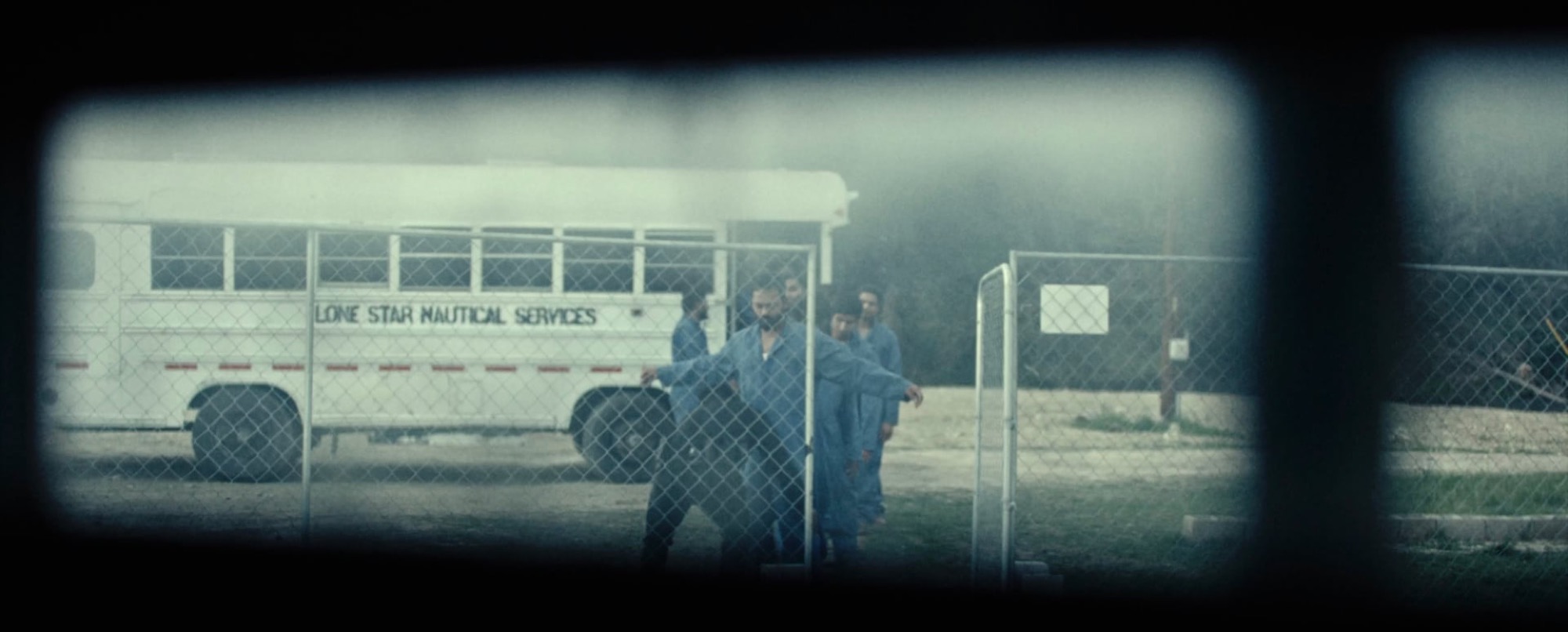
I love the idea of “a fictional re-imagination of their resistance”. Through your fieldwork and research into these horrendous practices, how did you collate the real-life accounts and then create a narrative script which gave the film such an authentic voice?
I was initially supposed to make this as a documentary. I was brainstorming the idea and specific incident with one of my film school professors and it turned out that his brother was an attorney who worked on the Katrina case and represented the workers. It was a pure chance and coincidence how we got access to the Indian workers who came to the USA after Katrina. After speaking to the workers, I got to know the gravity of the situations they faced and the horrendous exploitative nature of these guest worker programs. They said they wanted to be anonymous and refused to appear in front of the camera but they were happy that I was interested in telling this story. That’s when I decided to make this a narrative film and encapsulate their lived experience through fiction.
It also gave me an opportunity to imagine situations where my workers revolted and fought oppression in a symbolic way.
Then, of course, many other doors opened up for me to dig into a more profound truth. I could develop my characters from scratch, where they came from different walks of life and genuinely represent their motivations for migration. It also gave me an opportunity to imagine situations where my workers revolted and fought oppression in a symbolic way. For example, the bunkhouse where the workers lived in real life was never destroyed, but I wanted my characters to beat the shit out of that bunkhouse because, for me, it resembled a symbol of oppression.
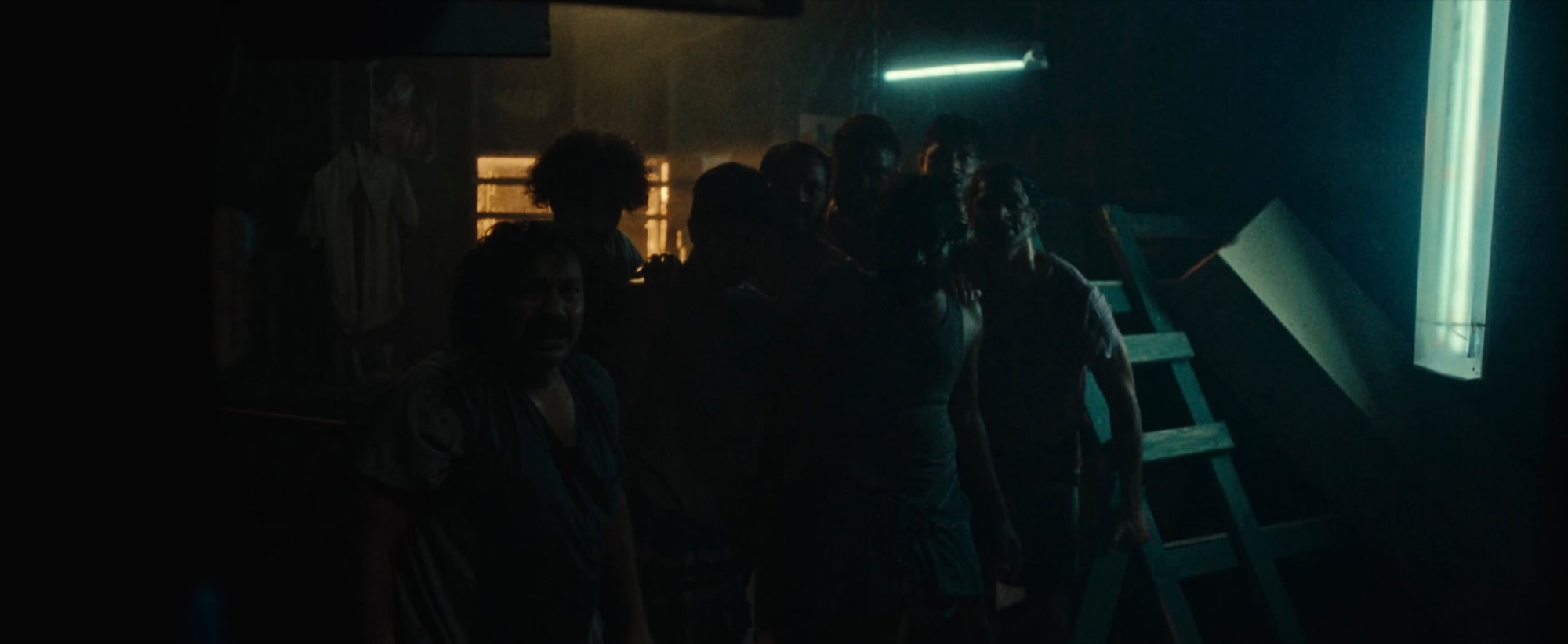
The dehumanising conditions of their living quarters are palpable, was it difficult to find a suitable location?
The biggest challenge was to find the bunkhouse. Luckily we had real-life photographs of it available from the press. We then found an empty warehouse where we decided to build that set from scratch and add details from these photographs. My Production Designer Javier Bonafont and his art department team did a remarkable job creating that dense environment resembling those photos. For their workplace, we found abandoned compartments of a ship in Corpus Christi and an industrial warehouse in Austin. The remaining locations, like the grocery store, were not that hard to find.
I envision this project sparking a dialogue about immigrant rights and labor exploitation in the USA and worldwide.
What were you looking for when casting your lead and how did you assemble a like-minded crew of collaborators for the production?
To play the lead in this film, I needed someone who has undergone similar real-life exploitation. I am pleased to have worked with the lead actor, Antonythasan Jesuthasan, a Sri Lankan civil war refugee in France who has starred in the 2015 Palme d’Or winner Dheepan. Most of my key crew are immigrants of color and they are the same creatives who helped me in my previous work. I envision this project sparking a dialogue about immigrant rights and labor exploitation in the USA and worldwide.
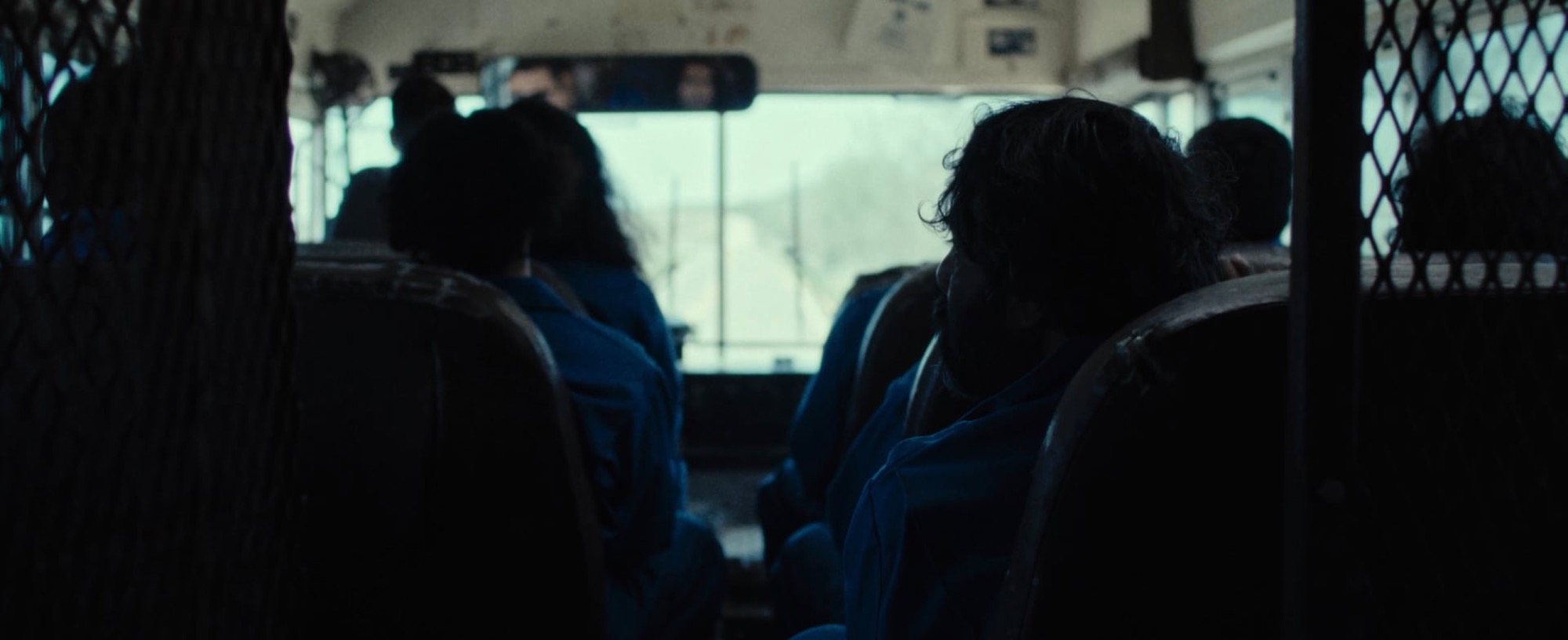
Naturally given the subject matter Men in Blue works within a dark and sombre visual aesthetic, what equipment did you shoot with to capture that?
We got the Panavision New Filmmaker Program Grant for equipment, so we used the Panavision DXL 2 with Panavision Super Speeds and Ultra Speeds. The lighting was very intentional. We wanted our characters to be surrounded by a void-like darkness with only patches of light around. My cinematographer and I were fascinated by the sodium vapor look mixed with the deep blacks at night, especially in the bunkhouse. The films of Pedro Costa helped us achieve the somber mood and feel of our film.
My cinematographer and I were fascinated by the sodium vapor look mixed with the deep blacks at night.
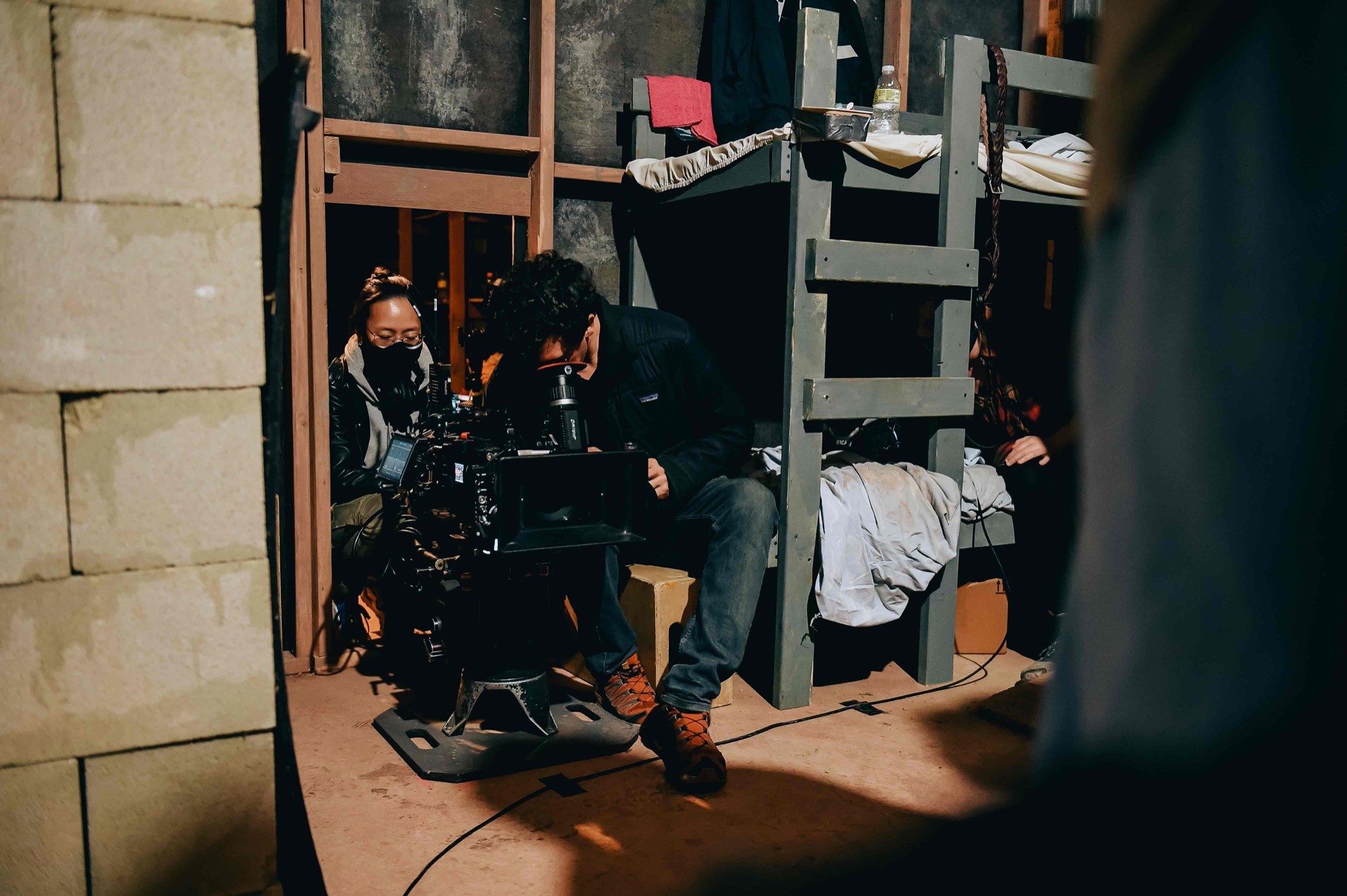

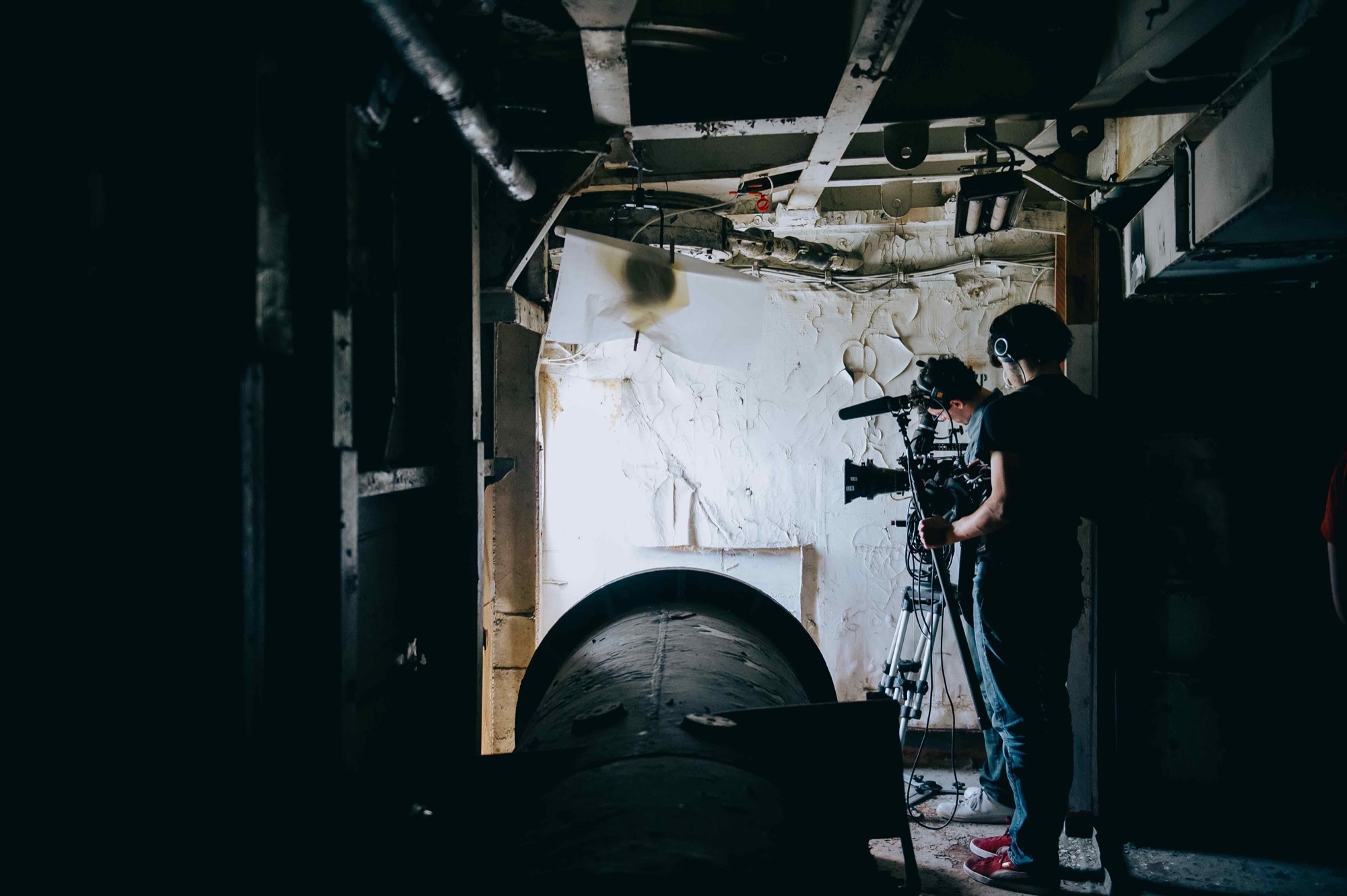
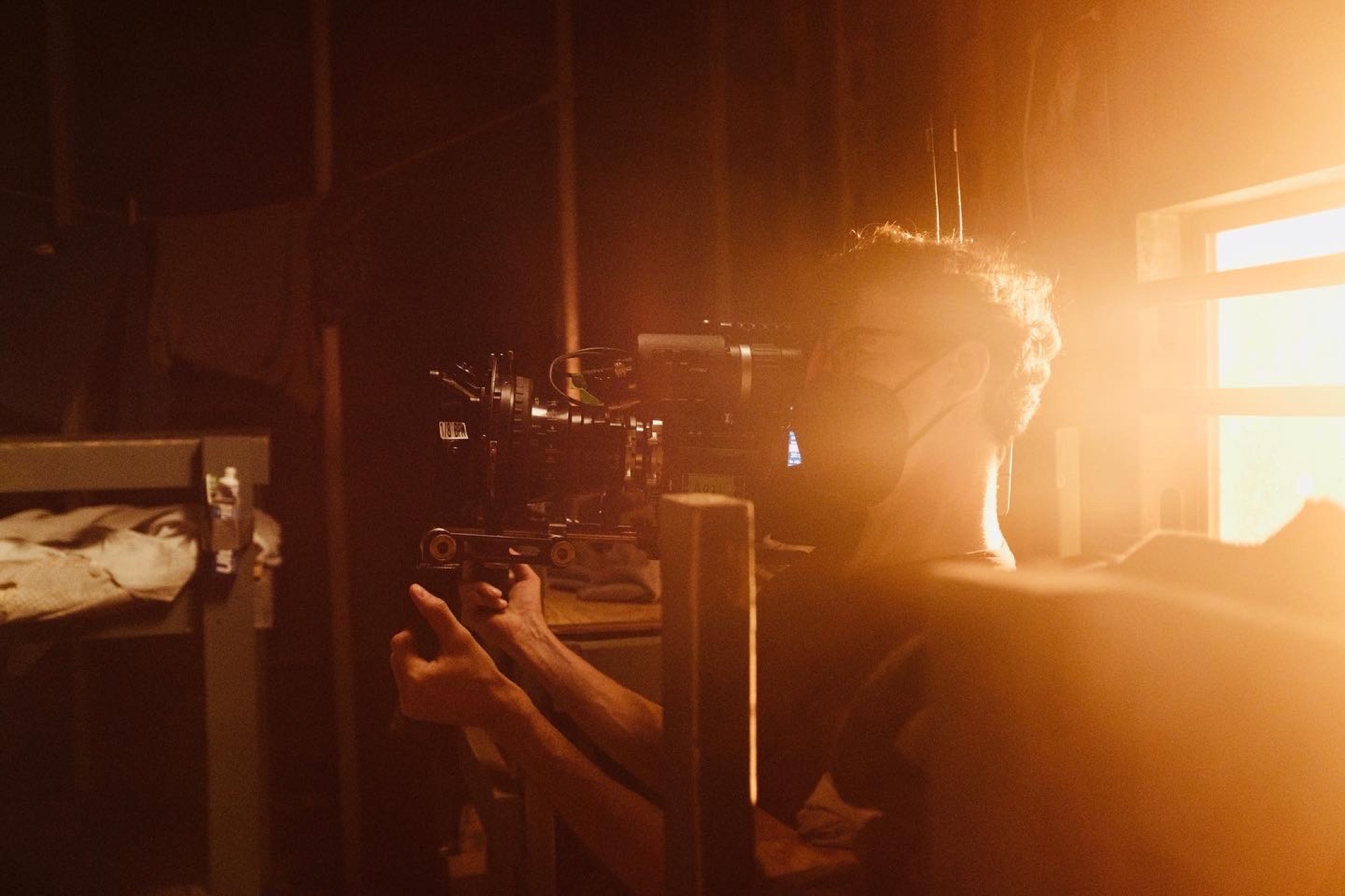
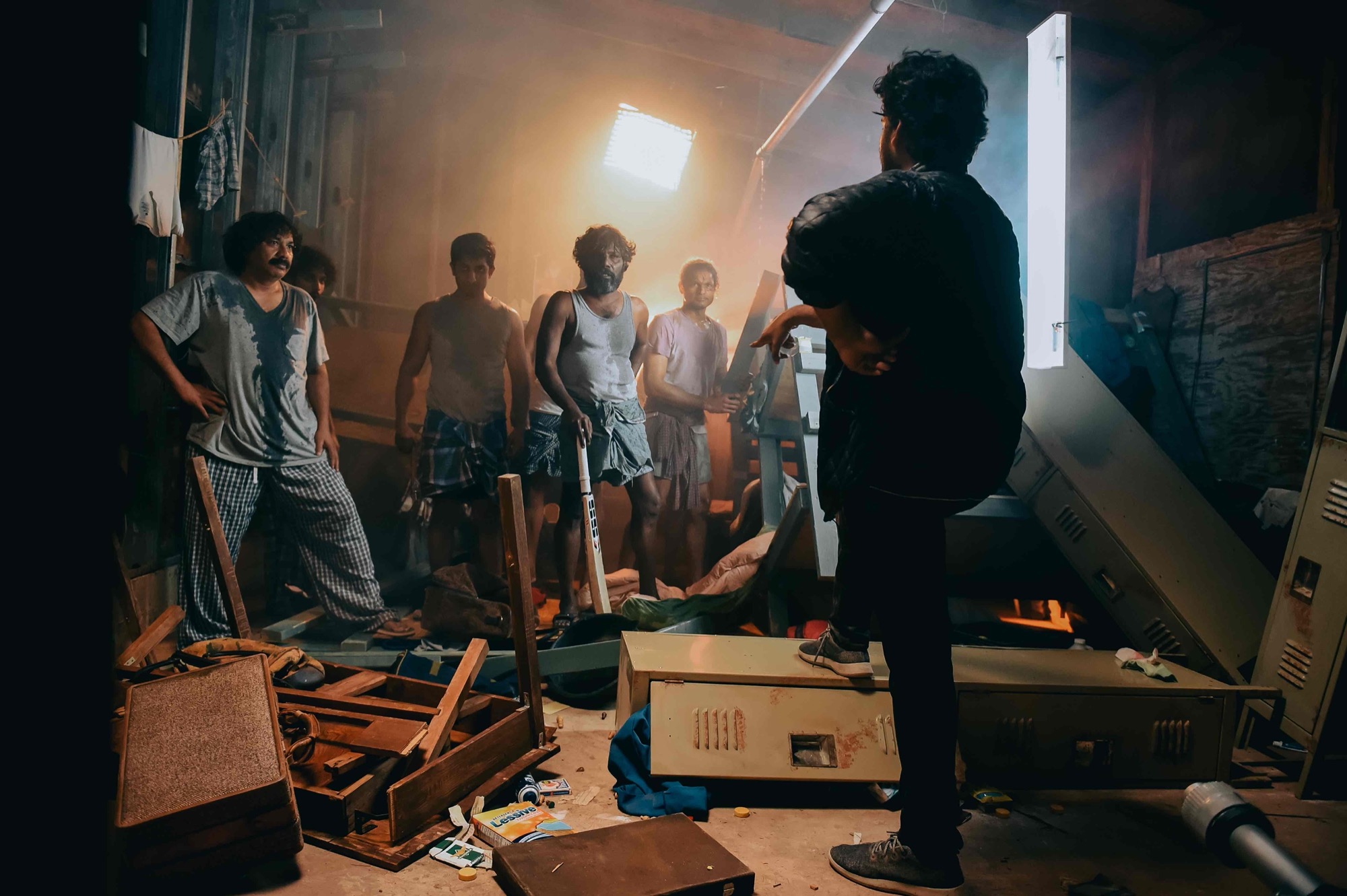
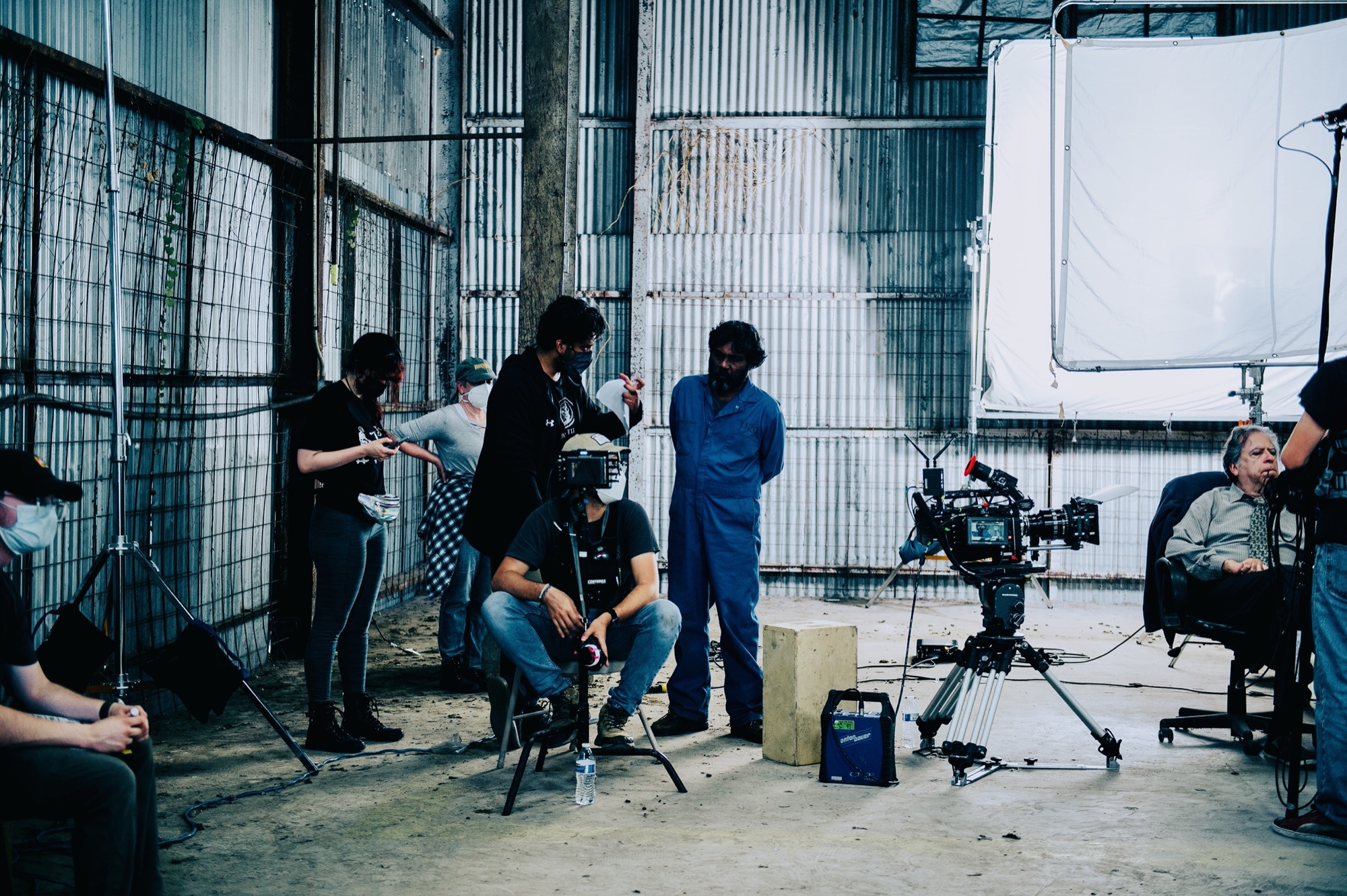
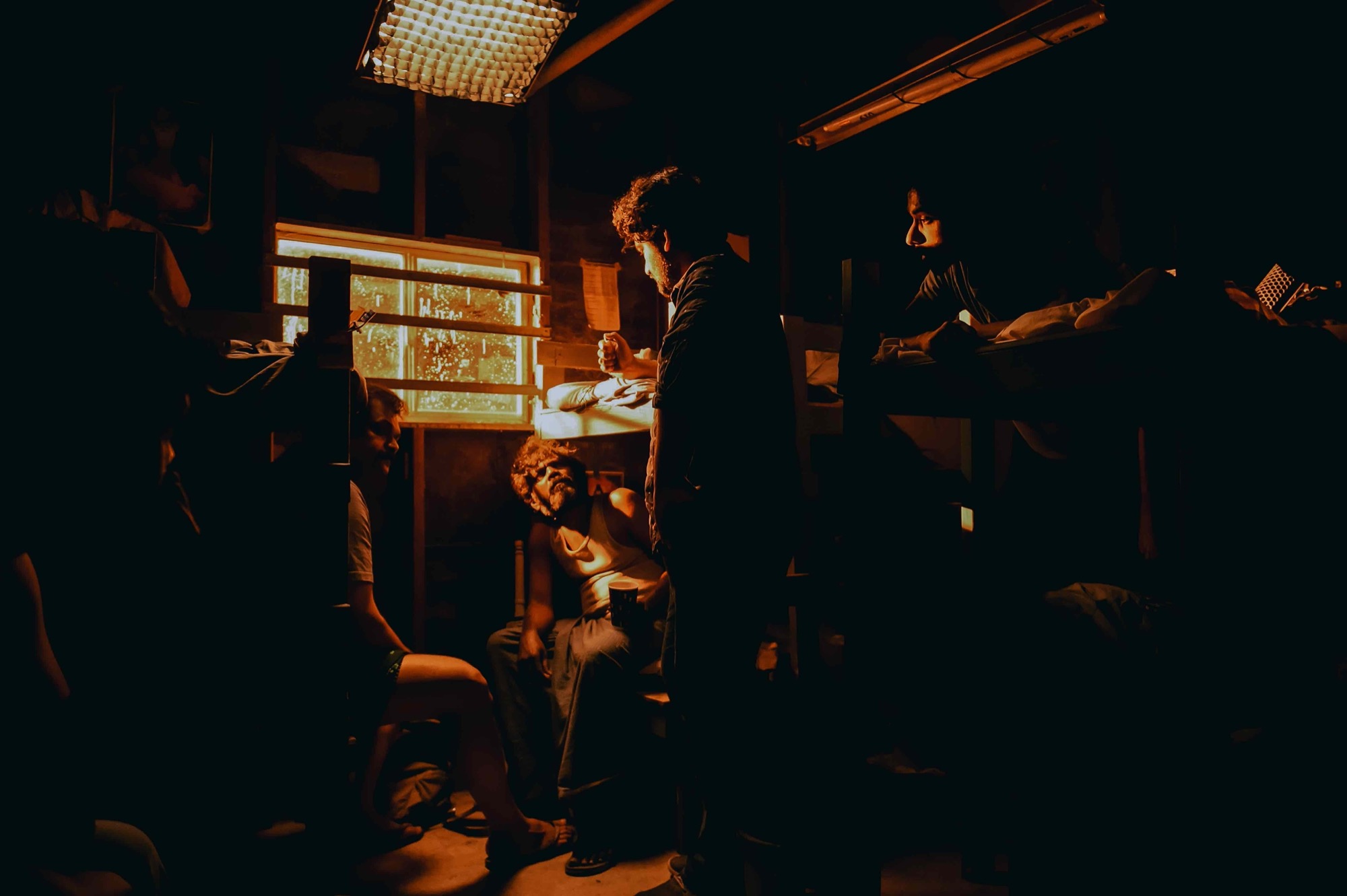
I love your use of close ups and tight angles which also enhance the claustrophobic horror of their living conditions. Was the style of coverage all planned out beforehand?
Yes. My DP Sebastián Valdivieso and I were very particular with the visual language we needed to tell this story. One of our first choices was to place the camera only in interiors when our characters are present in the frame. And then, slowly, we minimized our use of wide-angled shots. We decided to use them very sparingly. We wanted the audience to be there with our characters and experience the trapped-ness along with them.
What are you working on next?
I’m currently developing two feature-length ideas. One is a fiction set in the USA, and the other is a documentary in India. I’m waiting to see which one of them gains traction first and take it further.


